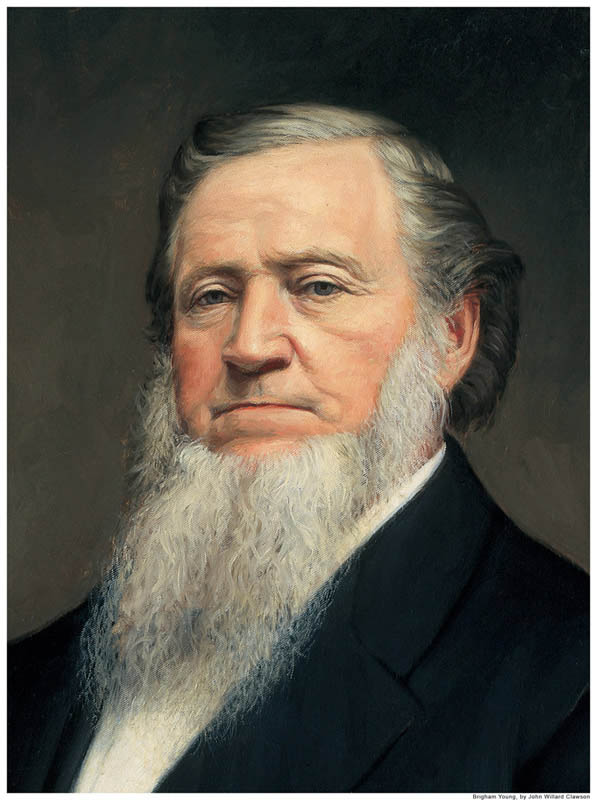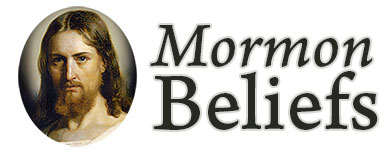Born on June 1, 1801, in Whitingham, Vermont, Brigham Young was raised by parents John and Abigail Young. The ninth of twelve children, Brigham never had much chance for a formal education, because they all had to work to support the large family. John and Abigail taught Brigham and his siblings to read. Though Brigham only had eleven days of formal schooling, he learned at home, and maintained a love of reading all his life.
 Abigail died from tuberculosis in 1815, and John remarried. A widow named Hannah Brown became Brigham’s stepmother, but at age 15, Brigham felt he should earn his own living and left home. He worked as an apprentice in Auburn, New York, and later became a master, carpenter, painter, and glazier.
Abigail died from tuberculosis in 1815, and John remarried. A widow named Hannah Brown became Brigham’s stepmother, but at age 15, Brigham felt he should earn his own living and left home. He worked as an apprentice in Auburn, New York, and later became a master, carpenter, painter, and glazier.
Brigham married Miriam Work on October 5, 1824, in Port Byron, New York. Soon after their marriage, the couple joined a local Methodist congregation, but in 1828, the Young’s moved to Oswego, New York, and joined a group of religious seekers who searched the Bible trying to discover truths they sensed were lost. The Youngs moved again, soon after moving to Oswego, this time to Mendon, New York. Miriam contracted the dreaded tuberculosis, which had taken Brigham’s mother, after giving birth. The disease did not kill her immediately, but it did leave her invalid for several years, and Brigham suddenly found himself responsible for being both breadwinner and for taking care of his household.
While working in Mendon, Brigham first encountered the Book of Mormon in 1830, when Samuel Smith—brother of the Prophet Joseph Smith—preached in Mendon that The Church of Jesus Christ of Latter-day Saints (often mistakenly referred to as the Mormon Church) was the restored gospel of Jesus Christ in its fulness. Samuel gave a copy of the Book of Mormon to Phineas Young, brother of Brigham. The book was soon passed around the family and Brigham began to study it. Increasingly disillusioned by the many Christian denominations which surrounded him, Brigham continued to study both the Bible and the Book of Mormon. After two years of putting the Book of Mormon to every test he could think of, he met a missionary who bore very humble witness of the truthfulness of the Book of Mormon. The Holy Spirit testified to Brigham through this young missionary’s testimony that the book was true. He and his family (including his brothers) were baptized in the spring of 1832, but Miriam died several months later.
Brigham’s conversion to the gospel was complete. He immediately began preaching about the restored gospel of Jesus Christ. He was called on many missions for the church, during which times he left his children in the care of a good friend and fellow convert, Heber C. Kimball. In 1832, after Miriam’s death, Brigham travelled to Kirtland, Ohio, specifically to meet the Prophet Joseph Smith. He felt Joseph’s authority and agreed to serve a mission to Canada in 1833. After returning from this mission, Brigham heard of Joseph’s call for the Saints to gather to Kirtland. Brigham led all the Saints from the Mendon area to Kirtland. At this time, he met Mary Ann Angell, a convert from New York. The two were married on February 14, 1834, in Kirtland.
In 1834, Brigham Young accompanied the Prophet and several other men on an expedition to Missouri, where the group, called Zion’s Camp, hoped to alleviate some of the suffering of the Saints there. Though the trip failed to accomplish its main goals, the time these men spent with the Prophet greatly strengthened their respect for him as well as their obedience. After the return of Zion’s Camp, Brigham Young was called to be a church leader as a member of the Quorum of the Twelve Apostles. Brigham continued to serve faithfully in the church, both as a missionary and using his physical skills to help build the Kirtland Temple.
Despite some tumult in the church from time to time, Brigham always remained loyal to Joseph Smith and supported him as the called prophet of God. The Saints were continually thrust out of their homes and moved from place to place. New York to Ohio to Missouri to Illinois, and ultimately to Utah. Joseph Smith was frequently arrested on false charges. Many times, his imprisonment left Brigham in charge, and he always managed to bring the Saints together, cooperating and helping one another, even in difficult times.
Brigham Young had many skills, and leadership and organizational skills were not among the least. He was part of the first foreign mission of the church, to England, where close to 8,000 people were baptized. He was also responsible for arranging the printing of the Book of Mormon in England, hymnals, thousands of tracts, and even a newspaper, The Millenial Star. In addition, he established an organization to help the Saints emigrate to America.
After serving several missions for the church, the Lord told Brigham Young, through Joseph Smith that he would no longer be called away from his family. Instead, Brigham organized missions from his home. He spent a great deal of time with Joseph and was present for many important revelations; he was also one of the first participants in the temple ceremony. He was also one of the first with whom Joseph shared the commandment of polygamy. Brigham was very opposed to the idea for quite some time, but came to terms with the fact that it was a commandment from God, so he chose to obey.
One of the most defining times in Brigham’s life came when the Prophet Joseph Smith and his brother Hyrum were martyred on June 27, 1844, in Carthage, Illinois. Arrested yet again on false charges, Joseph and Hyrum had turned themselves in, knowing that it would most likely end in their death. They were attacked by a mob and both shot. The Quroum of the Twelve Apostles took over the leadership of the Church for more than three years, when they unanimously sustained Brigham Young as the next president and prophet of the church.
 In the meantime, the Quorum of the Twelve followed Joseph’s plan for the Saints to move West. Nicknamed the Mormon Moses for leading such a large exodus of people, Brigham went with the first group of Saints to the Salt Lake Valley in 1847. After this, he organized the transportation of thousands more people to come to the valley and build up Zion, free from much of the persecution which had plagued the Saints already for so many years.
In the meantime, the Quorum of the Twelve followed Joseph’s plan for the Saints to move West. Nicknamed the Mormon Moses for leading such a large exodus of people, Brigham went with the first group of Saints to the Salt Lake Valley in 1847. After this, he organized the transportation of thousands more people to come to the valley and build up Zion, free from much of the persecution which had plagued the Saints already for so many years.
This exodus was not easy for any of the Saints, but they all made this sacrifice because of their faith in God. Brigham Young organized the Saints after they gathered to Utah, building up Salt Lake City and settling much of the Great Basin.
The Utah Territory was finally created in 1850, and Brigham was appointed governor. He also saw the beginning of the construction of the Salt Lake Temple in 1853. Ever the organizer, Brigham also founded the Perpetual Emigration Fund to help converts abroad come to Utah and gather with the other Saints. This system allowed converts to borrow enough money to make their journey. When they paid their loan back, that money could in turn be used for the next immigrant, and so forth.
With the vision in sight of finishing the construction of the Salt Lake Temple and making the journey West easier for converts, Brigham Young called many Saints to work on the transcontinental railroad in Utah and Idaho. Brigham also had the Saints organize many cooperatives to raise food and sell goods to one another.
Though Brigham did not have much of a formal education himself, he recognized the importance of it and established schools for every grade level. In addition, he helped found three colleges. Most important were the construction of more temples. He helped begin the construction of the Salt Lake, St. George, Manti, and Logan Temples.
Brigham Young died on August 29, 1877, at age 76. At that time, the Church membership had grown to more than 115,000. He was truly a remarkable man, and is truly one of the most important and influential figures in the history of The Church of Jesus Christ of Latter-day Saints and one of the most important religious figures in American history. He accomplished many remarkable feats in his life and his genius for organization and leadership helped him to lead the Saints well. He was a prophet of God and led the church through revelation and authority. He was beloved by his family and respected by even his enemies. He taught with power and love and was a remarkable example to all around him.
